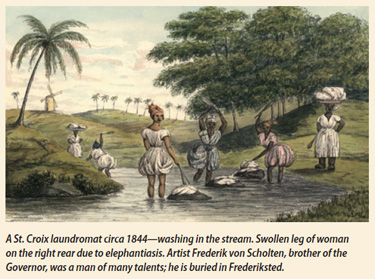 by Nina York
by Nina York
There was a time when being a researcher required many hours spent in libraries and museums, frequently requiring appointments made months in advance, travel costs and uncertain outcomes. In the case of research about the Danish West Indies, history buffs in the Virgin Islands knew of the rich lode of information sitting in the archives in Denmark, but accessing it from here was cumbersome and expensive. Yet the deep interest was there, especially in family records, and has now become far more accessible on the virgin-islands-history.org internet site of the Danish National Archives, holding over 5 million documents, many of which have been translated into English.
What can we learn in these sources about the past of over a hundred years ago? The records can be studied randomly, but they are organized into five sections that cover Personal History, Ownership History, Slavery, Colonial Power, and Trade and Shipping. These categories cover not just official documents, some of which can be cumbersome and dull, but others such as manifests of what the ships brought here for general consumption. With the knowledge that many food products would spoil in the heat before refrigeration was invented, we note that salting and curing meats and seafood was a necessity, but we wonder why the diet of former days used so little of the produce readily available for growing here that did not require much preservative efforts. We note that so much wine was imported but learn it may have been used for medicinal purposes. So many hats were also purchased from abroad, but seldom useful for sun protection. A lot of machinery was needed and brought here for the sugar industry that was the basis of the local economy.
We notice in the burial records of Christiansted detailed information about each deceased person, such as his or her age, occupation, birthplace, marital status, cause of death and gravesite number and cemetery location. These records reveal not only the high infant mortality rate but the existence of diseases that proved fatal in those days, some of which, like leprosy and elephantiasis, no longer pose a threat, nor do dropsy and tuberculosis. Cause of death for infants is listed as “teeth” which is puzzling. Living in a community with a high death rate must have caused a lot of distress, and we realize our good fortune in having a basically good health care system today.
There are interesting court cases to read about, some offering testimony from enslaved persons, where we can gather a glimpse of the misery that filled their lives. The cruelty of punishments that prevailed in those days makes us shudder, yet such was the administration of justice in almost all of western society, and not any better in Asia and Africa. We leave the site with relief that those days are over, at least here.
